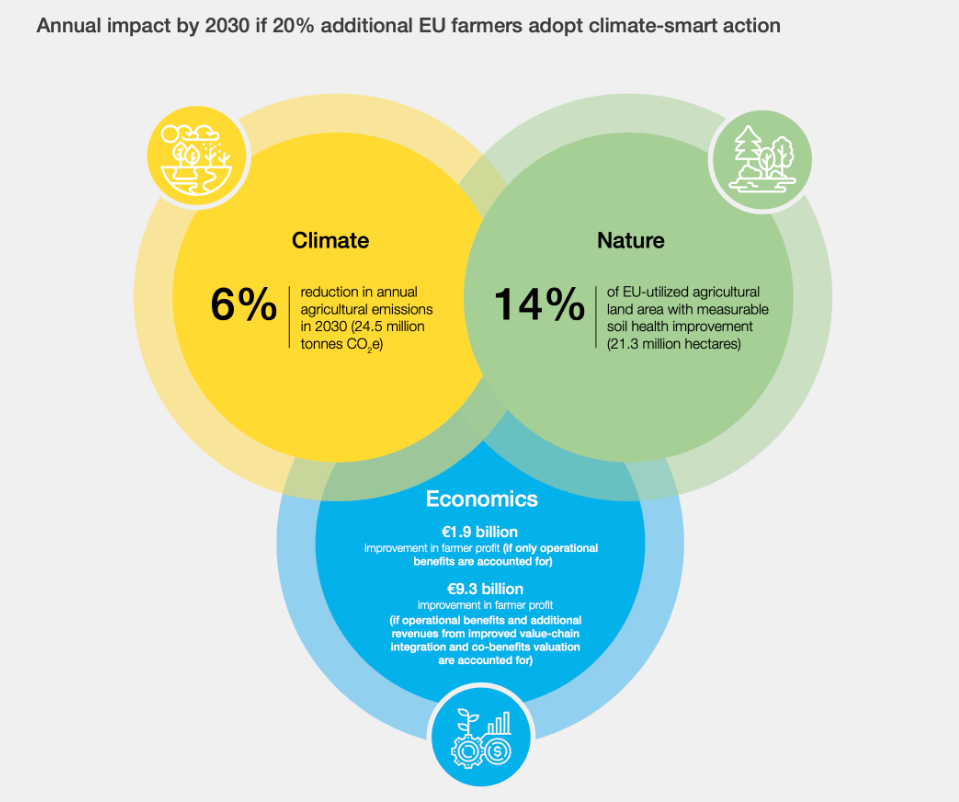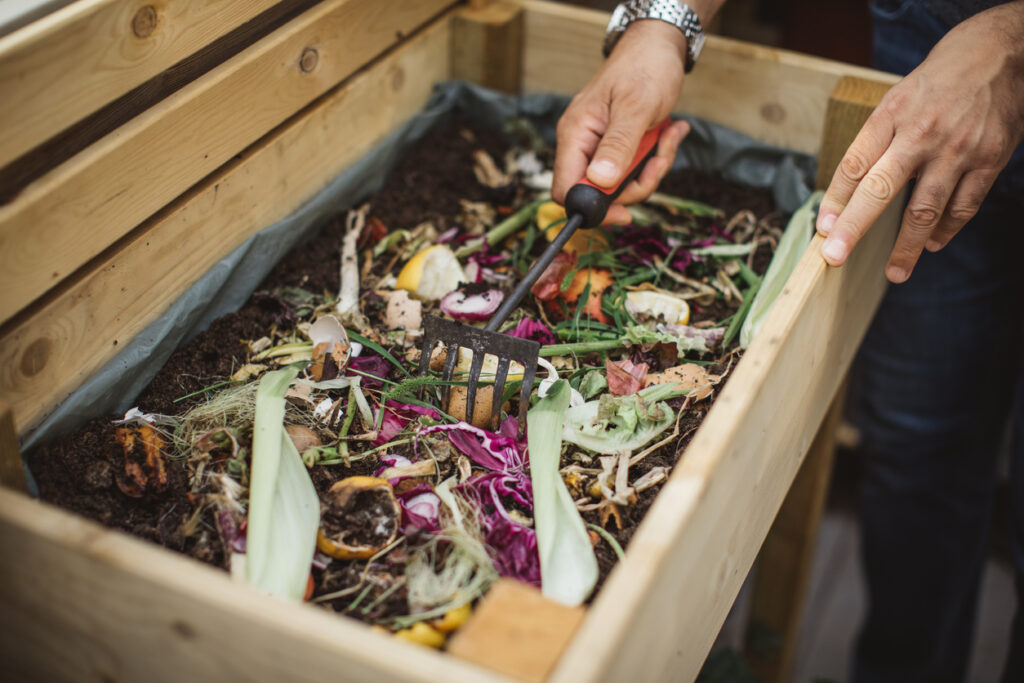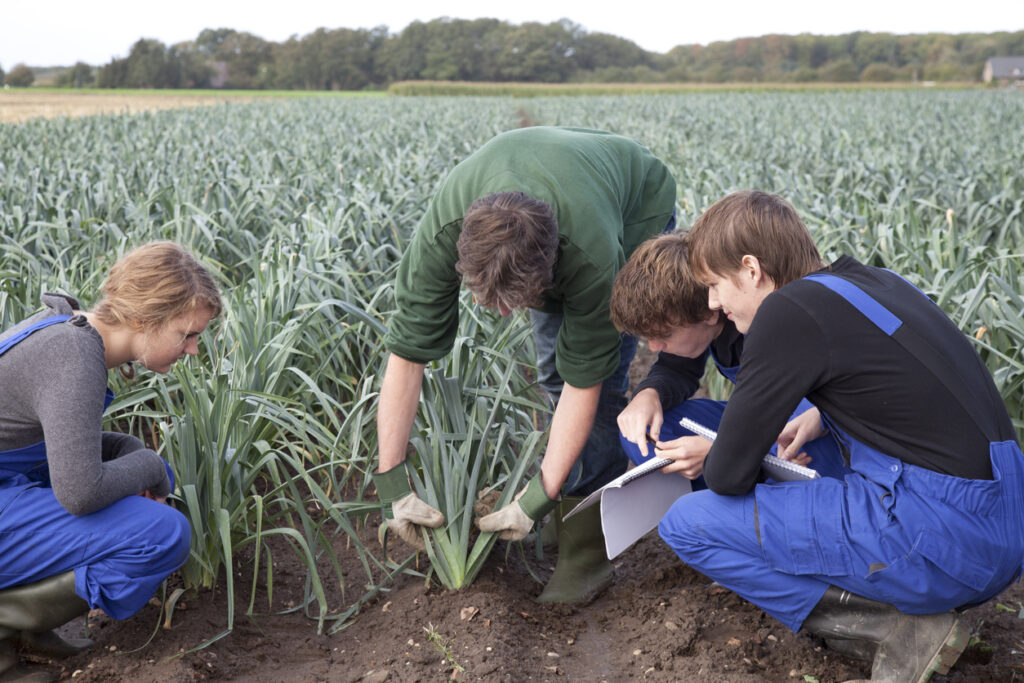According to a 2022 report by the Intergovernmental Panel on Climate Change (IPCC), 22% of total net anthropogenic greenhouse gases (GHG) came from the agricultural, forestry and land use sector in 2019 – can regenerative agriculture help to combat those numbers?
What is regenerative agriculture?
Regenerative agriculture (RA) refers to any type of farming that has a positive impact on the environment, instead of maintaining or damaging it. Where industrial agriculture methods involve a more linear process, regenerative agriculture recognises how soil, water, crops, humans and animals are part of an interconnected system, focusing on reducing waste and prioritising soil health. The World Economic Forum estimates that greenhouse gases could be 6% lower a year by 2030 if farmers adopt climate-smart farming methods such as RA.

Why is regenerative agriculture important?
In 2022, the UN Food and Agriculture Organisation announced that 90% of the planet’s topsoil is likely to be at risk by 2050, with the equivalent of a football pitch of Earth eroding every five seconds. Although it doesn’t take long to erode soil, it takes around 1,000 years to create just a few centimetres of topsoil. With an ever-increasing demand for food, it’s clear that industrial agricultural methods aren’t sustainable. The World Bank states that a third of food produced globally is either lost or wasted. This is something that has to be addressed to relieve stress on the environment and help us to reach climate improvement goals.
RA is a collection of farm management practices that focus on a sustainable approach to farming, with soil health at the foundation of its efforts. To start, it’s not just about sustaining soil, but ensuring that it is being regenerated, so it involves practices that create abundance and diversity of soil microbes. Soil microbes are the key to driving processes which promote soil health and solid structural effects, including; improved water penetration and retention, improved nutrient retention and availability to plants, decreased soil erosion and increased soil aggregation.
Important nutrients like carbon and phosphorus are stored in healthy soil. It is a component of “nutrient cycling” activities, which are essential for ecosystems and wholesome foods. In essence, soil and air are sources of nutrition for both plants and animals. The nutrients are released back into the ecosystem, including the soil, when those plants and animals perish and decompose. Biodiversity, better water, healthier employees, and more productive land are all advantages of healthy soil and regenerative practices.
Types of regenerative agriculture practices
There are many types of regenerative farming, below are a few examples of the most common techniques:
- No-till farming – this refers to a farming method which ensures that soil is left intact when planting rather than disturbing it through ploughing. The quantity and diversity of soil microbes is increased when soil is undisturbed. This provides a tougher resiliency to crop stressors and improves soil structure.
- Composting – this is the natural process of turning waste from food or manure into fertiliser. These materials contain carbon, which when added to soil slowly decomposes to create stable organic matter. Rebuilding depleted soils with compost enables organic and sustainable growth.
- Cover cropping – this involves the action of planting crops in soil that would normally be empty after a cash crop is harvested. With continual plant and root growth in the soil, better nutrients are present in the soil which reinvigorates other plants. In fact, the use of cover crops is a fundamental strategy that can help to improve soil biology and structure, recycle nutrients, reduce the need for synthetic fertilisers, trap carbon from the atmosphere into soils, and reduce agricultural runoff.
- Animal integration – introducing livestock into agricultural crop processes makes it easier to recycle nutrients. Grazing on cover crops can improve carbon sequestration into your soils too.
- Agroforestry – this technique involves combining the land in which crops and trees grow. Crops are grown in between rows of trees, contributing to a wider variety of crops yielded. The result is increased plant diversity, soil health and reduced soil erosion.
- Crop rotation – in order to emulate the natural diversity of native plant ecosystems, crop rotation is essential. Crop rotation creates a diversity of plants, which in turn increases the diversity of soil microorganisms, which will improve crop resiliency and yield.

How does regenerative agriculture impact climate change?
The food sector is the second largest emitter of greenhouse gases, behind only the energy sector. It faces many challenges, from hunger and deforestation to droughts and floods. Regenerative food systems can help to reverse this and potentially achieve net zero, nature positive results by the end of the decade by turning farmland and pastures into carbon sinks, reversing forest loss and improving crop yields. RA can help with climate mitigation and adaptation.
Climate mitigation
Climate mitigation refers to the efforts of reducing or preventing GHG emissions. Soil is one of the largest and most important carbon sinks. Plants can capture the carbon through photosynthesis and microbes and release it into the soil. This process is called carbon sequestration. Healthy soil which hasn’t been disturbed has the ability to capture more carbon than degraded soil.
In addition to the carbon sequestration point, RA also uses less machinery and fewer pesticides, which means less carbon dioxide emissions.
Climate adaptation
Climate adaptation refers to the efforts to adjust to the impacts of climate change. RA can contribute to climate adaptation by increasing soil resilience to changes in the climate or adverse weather conditions. Healthier soil absorbs more water, making farmland more resilient to floods and droughts, and reducing runoff. Crop rotation also ensures the diversity of plants, which reduces the risk of a complete failure if weather conditions are particularly adverse.
The transition to regenerative agriculture
RA is gaining popularity but there is still a long way to go for it to completely replace industrial farming methods. The key to accelerating the transition is through education and awareness of the benefits of RA, as not many consumers and policymakers are aware of the countless benefits of RA practices. In addition to this, governments often prioritise the tried-and-tested industrial farming techniques, rather than investing in more sustainable small-scale farming. To really support farmers in transitioning to RA, more financial incentives should be provided to those who opt for more climate-smart ways to farm.

Conclusion
With an ever-growing global population, a constantly growing demand for food and topsoil which will be at risk in the next few decades, it’s clear to see that more sustainable methods of agriculture need to be implemented and adopted. RA limits the amount of greenhouse gases present in the atmosphere, reduces waste and most importantly results in healthy soil. Through this interconnected system of crops, plants, humans and animals, we will be able to preserve and even improve the health of our planet. The benefits are there to see, but there needs to be greater awareness and support to ensure that RA can become as effective as it could be.











